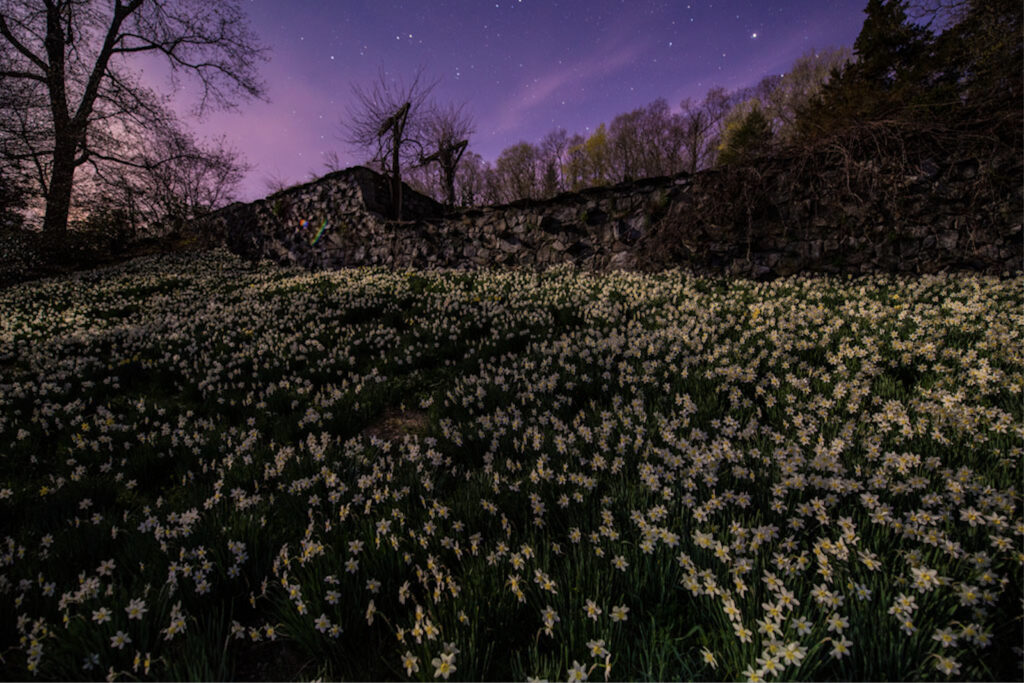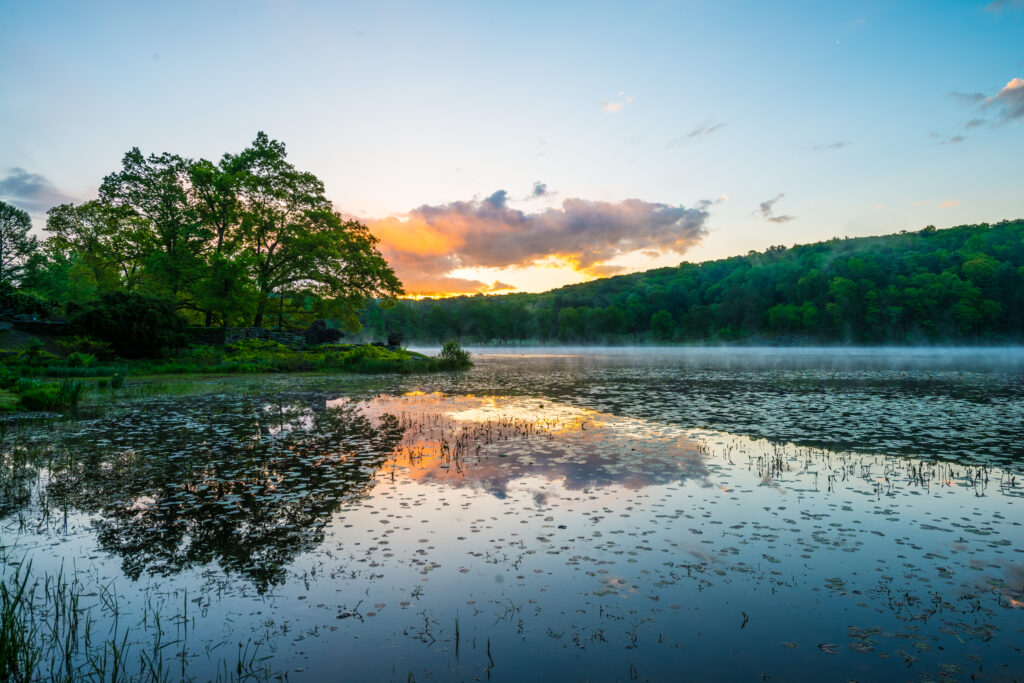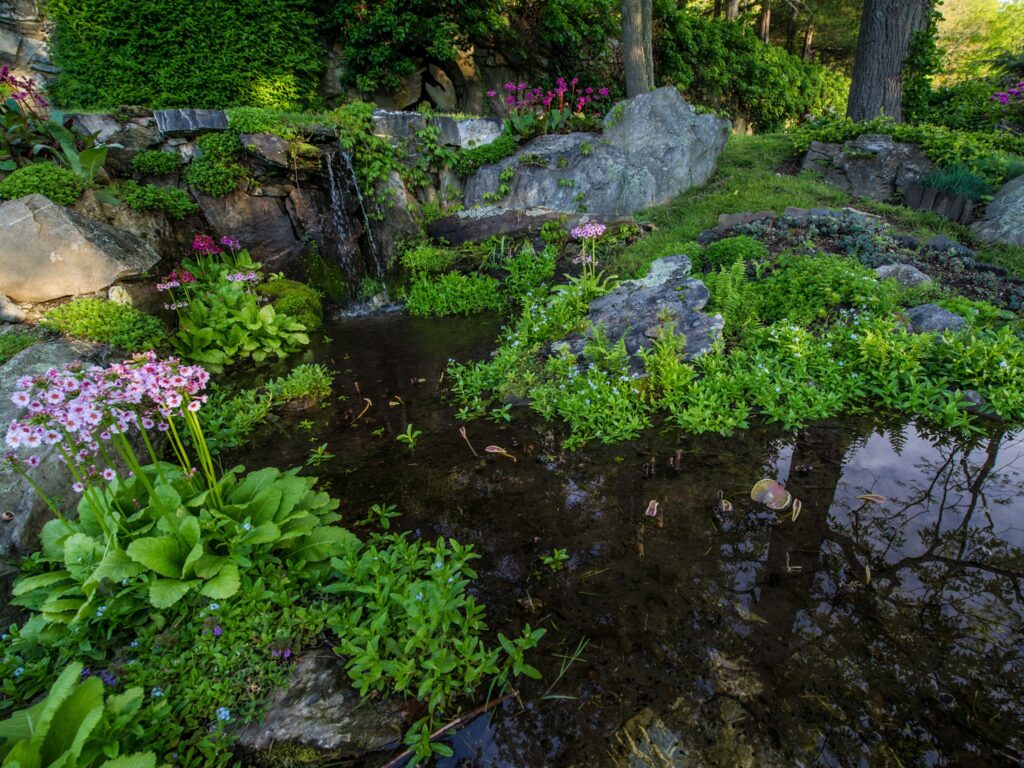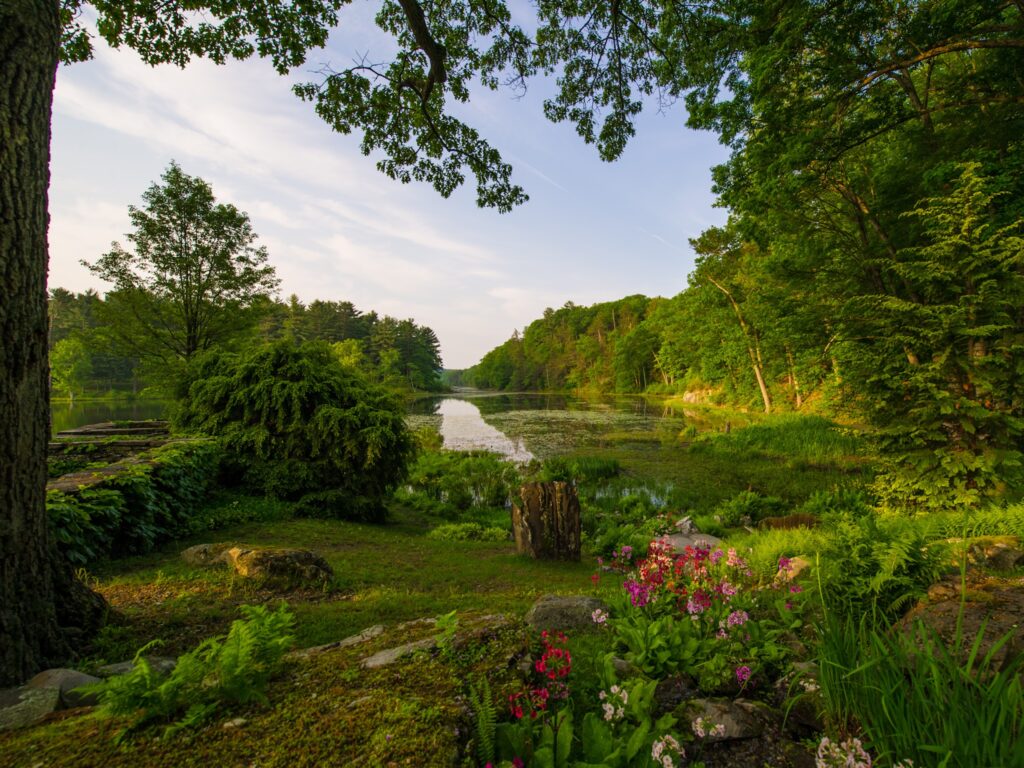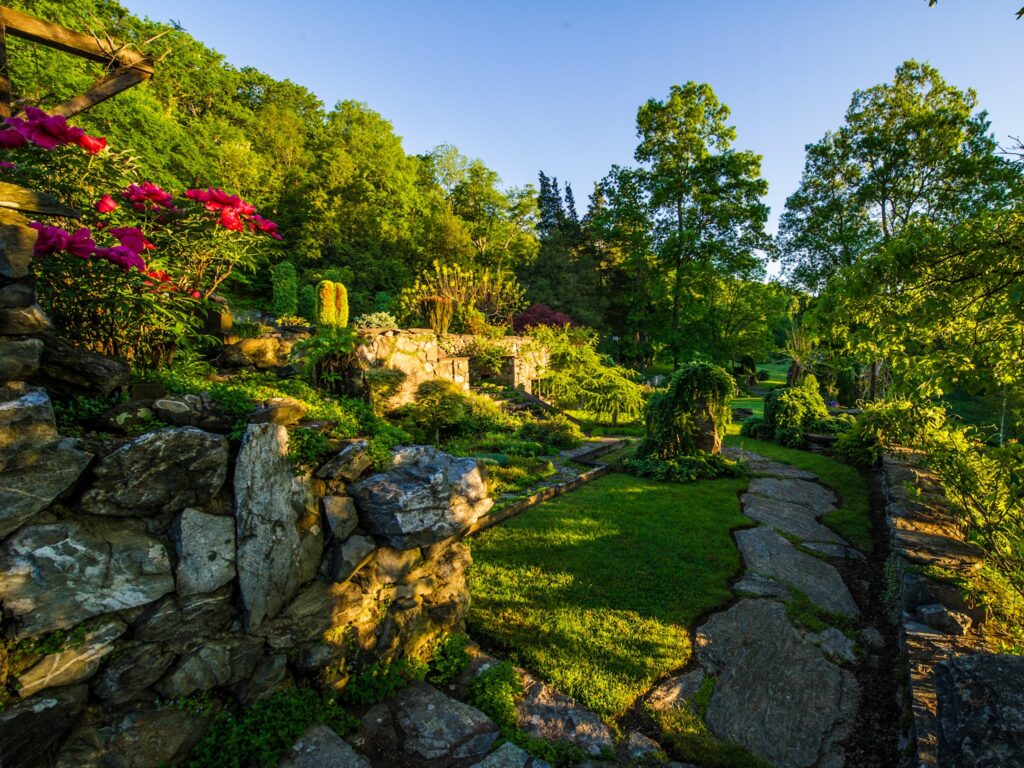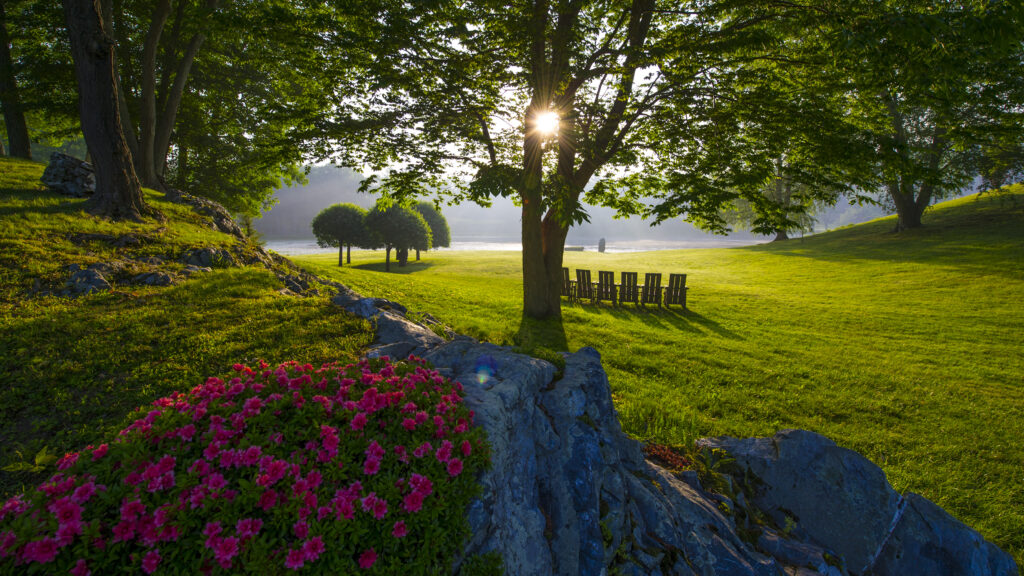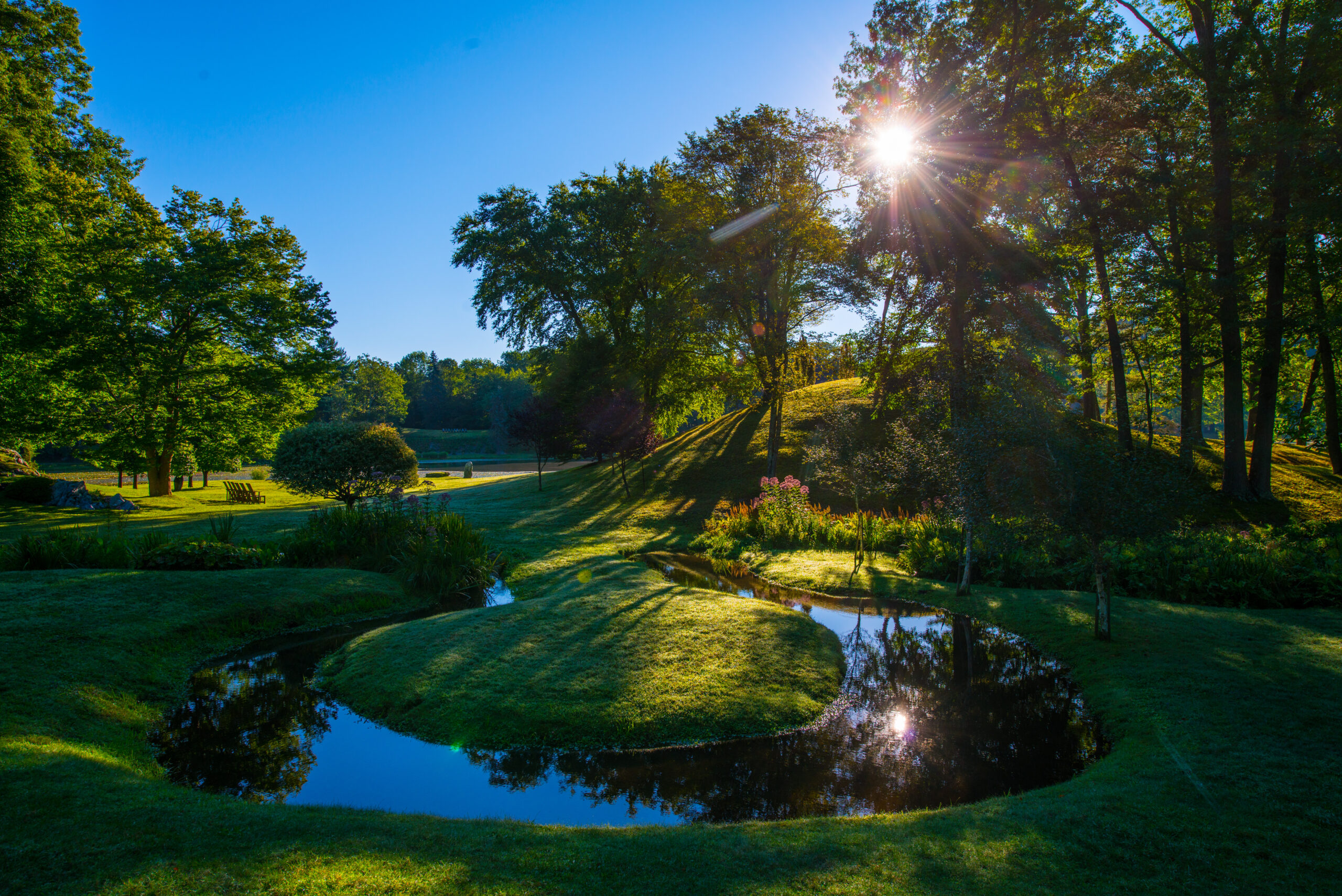After the Winter Doldrums, There’s No Better Place to Rejuvenate Your Senses than Innisfree Garden
By Jamie Marshall
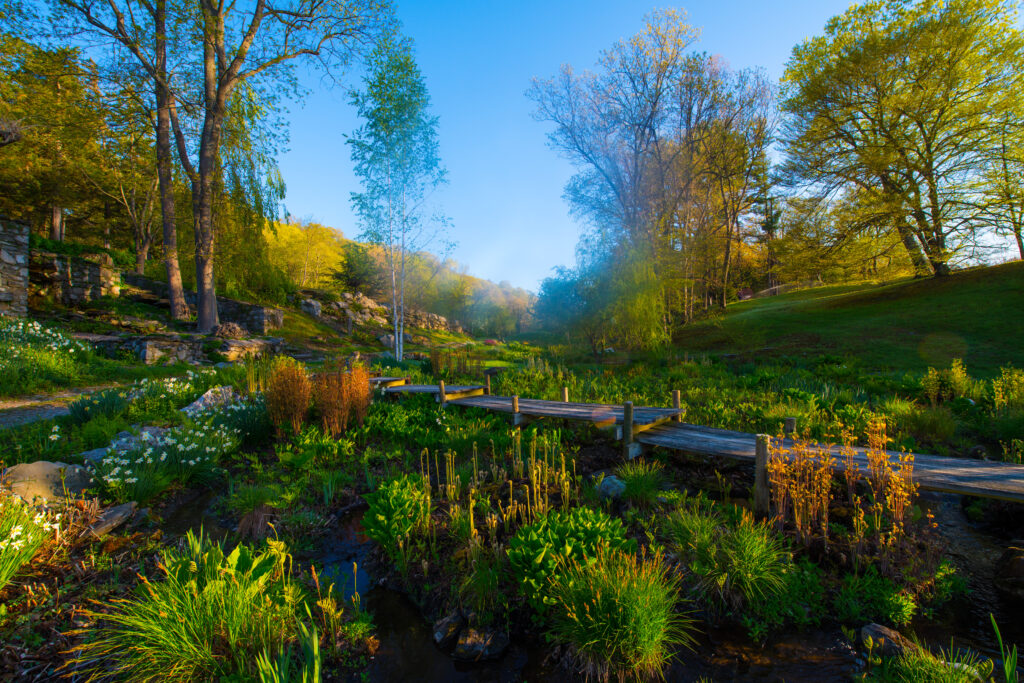
There is something inherently calming about Innisfree, the 185-acre public garden located near the village of Millbrook. Nestled around a deep glacial lake, where ducks paddle serenely, Innisfree takes its cue from the land’s bowl-shaped topography. Its diverse landscape is an enchanting mix of woodland, rock, bog, and meadow gardens, clipped lawns, sweeping views, old stone walls, and water-slicked ledges where hardy plants find purchase with ferocious intensity. Created over a span of nearly 60 years, Innisfree merges traditional Chinese and Japanese garden design principles with elements of twentieth-century Modernism and Romanticism. “It’s all rolled into one amazing relationship with nature,” says Kate Kerin, the garden’s landscape curator, who also leads monthly tours.
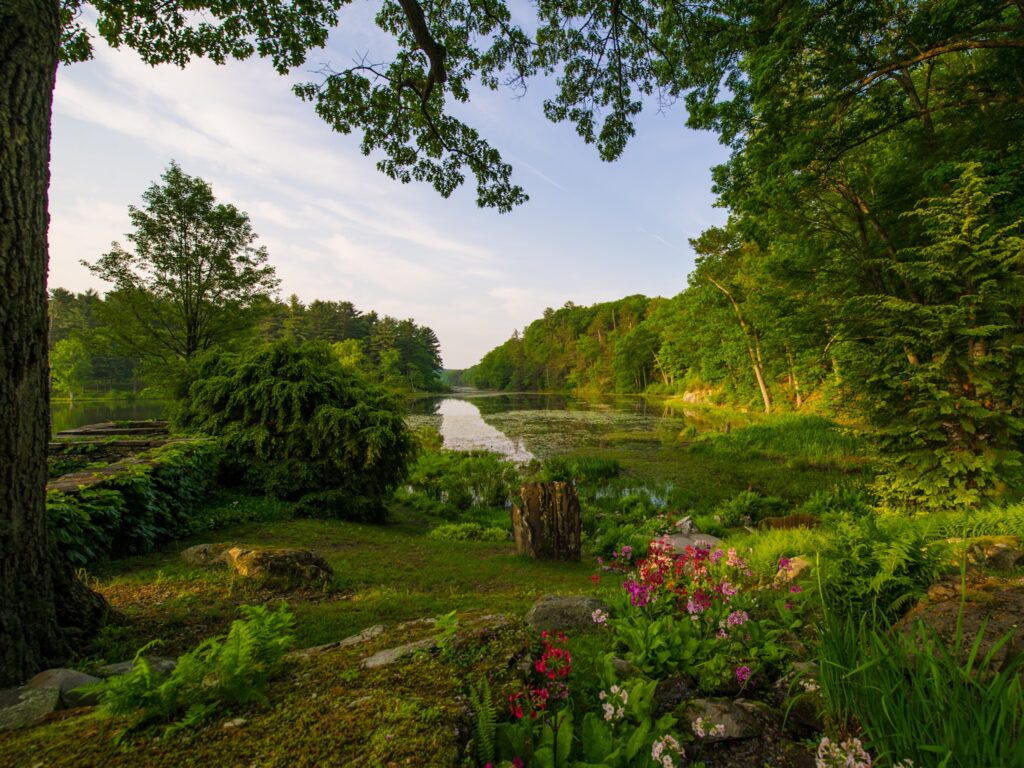
Innisfree starts to awaken in mid-to late-April when native shadblow trees bloom and thousands of heirloom daffodils carpet the grounds. Next up: red columbine, pink Japanese primroses, pale-yellow foxglove, and pink and fuchsia azaleas, all juxtaposed against the greening new buds of weeping willows and pear trees, birch, and maple. There are strategically placed rocks and fountains throughout, an oxbow-shaped stream, a narrow wooden footbridge, and even a stone buddha tucked into a stone wall—or is it a penguin or a whale? “It can be whatever you want it to be,” adds Kate. “The sense of whimsy was very important to William Beck.”
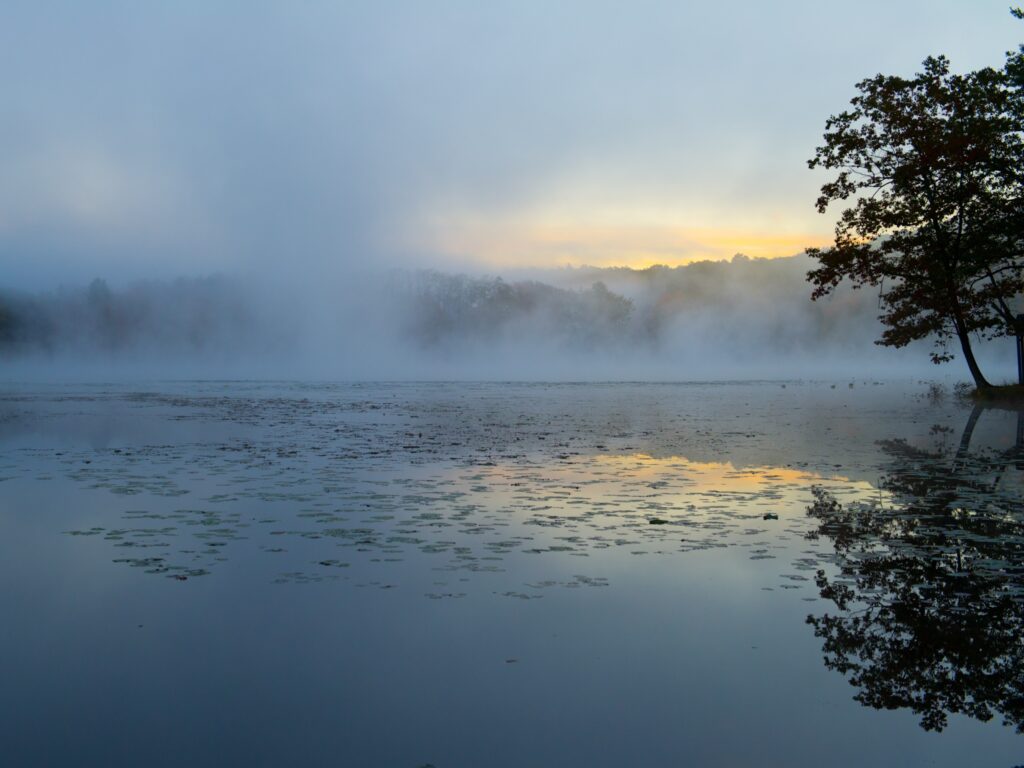
Beck, a painter and son of a professional gardener, and his wife Marion, an avid gardener and heiress, began creating Innisfree during the early 1930s. That was when they conceived their English-style country estate. They intended to create a formal garden as was the custom of the day. But a chance encounter with a 200-year-old scroll painting—depicting the eighth-century garden of Chinese poet and painter Wang Wei—sent the Beck’s in a different direction.
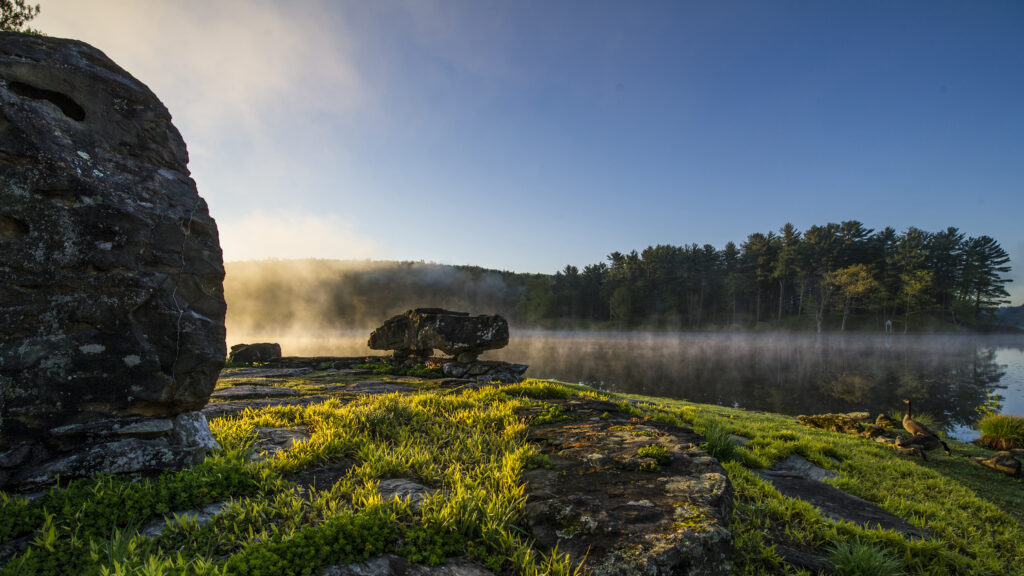
Beck was intrigued by the Chinese belief that a garden should be a series of self-contained moments. He began creating individual vignettes, which he called “cup” gardens. But it wasn’t until 1938—when the Becks began working with Harvard-trained landscape architect Lester Collins—that each vignette began to be woven into the whole. Collins would spend the next 55 years bringing their vision to life. After their deaths in the 1950s, Collins led the foundation that helped transform Innisfree into a public garden. “He was a big believer in letting nature do the heavy lifting,” says Kerin. “And we do the editing.” With only five full-time staffers, it’s a philosophy the garden maintains to this day.
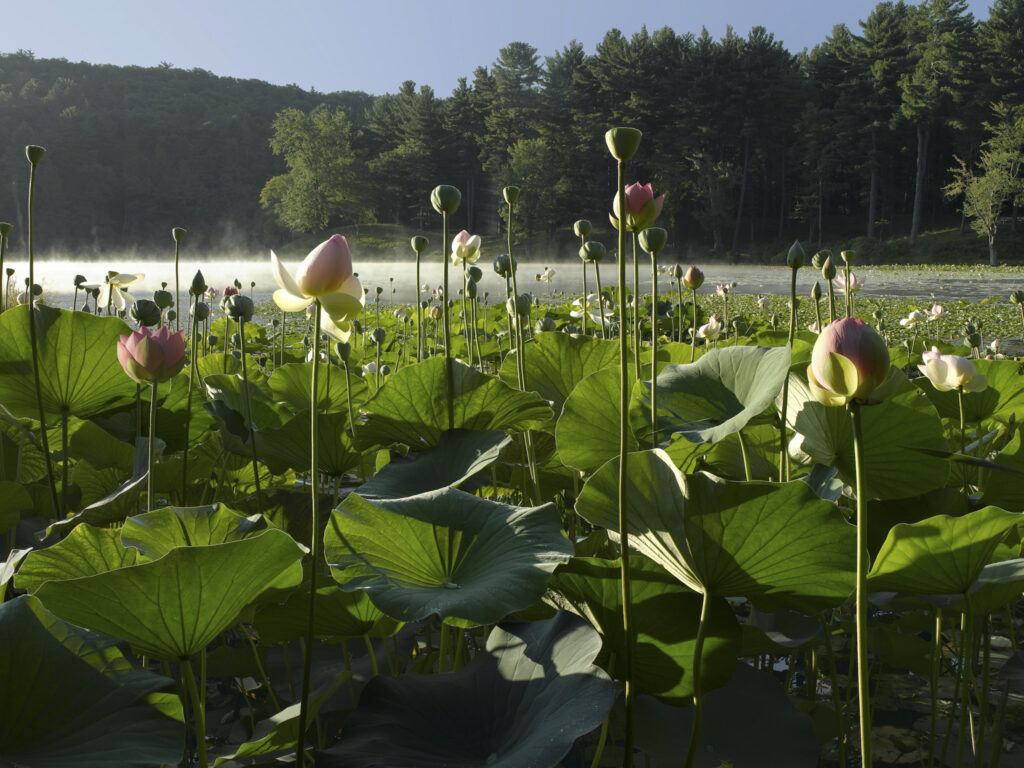
A 2015 meeting between Charles Birnbaum, President of The Cultural Landscape Foundation, and the board of trustees was pivotal. “He told us this is among the most important landscapes in the country and then helped us lay out a roadmap for good stewardship,” says Kate. The first step was to apply for National Register of Historic Places status, which the garden received in 2019. The garden’s visitor numbers increased significantly during the pandemic. The momentum shows no signs of abating as executive director, Laura Palmer who joined the organization in early 2021, introduces new programs designed to engage the community.
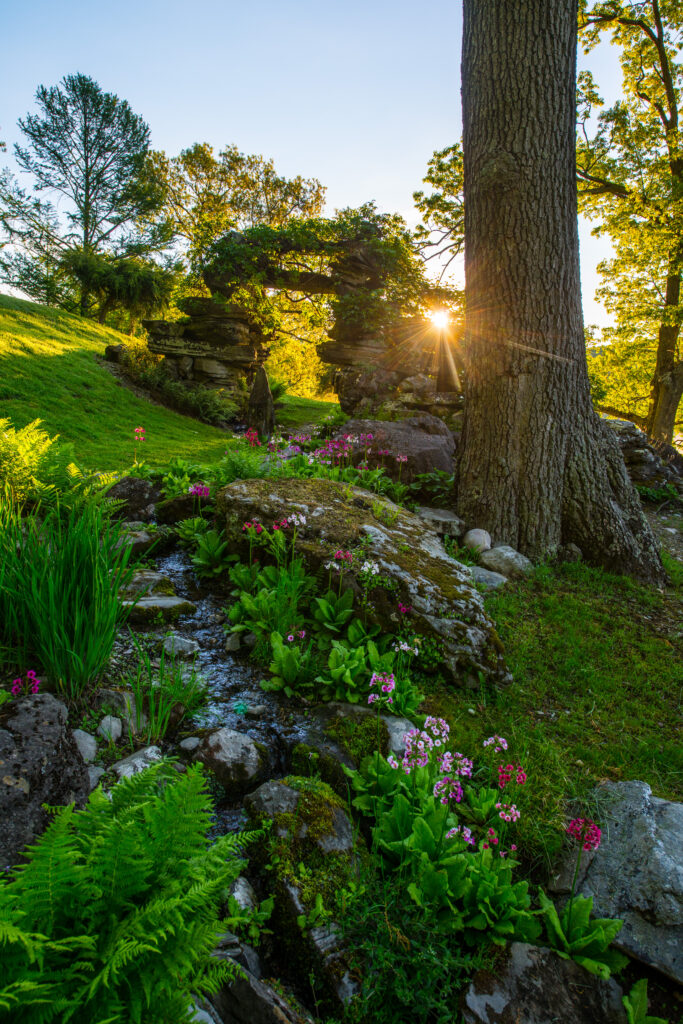
“People who have no design or gardening background love the garden because they feel great there,” she says. “Kids get it because it’s fun. And knowledgeable gardeners and designers are blown away by it.” —innisfreegarden.org
